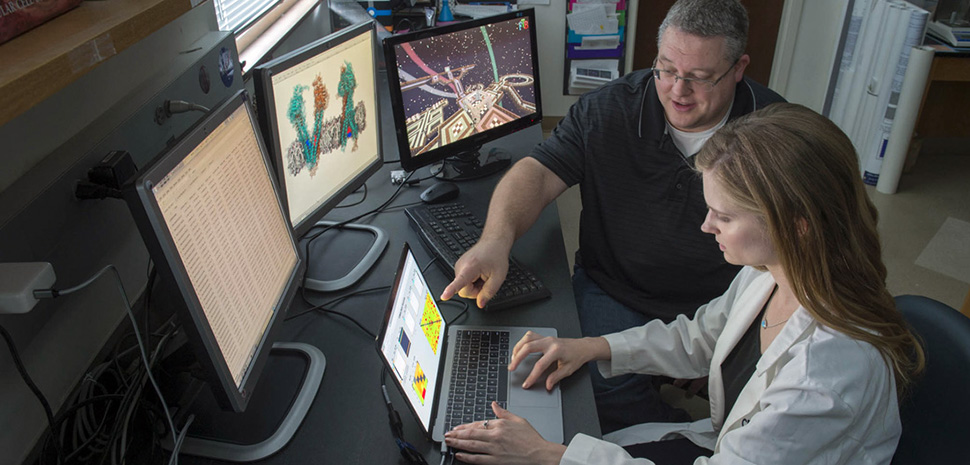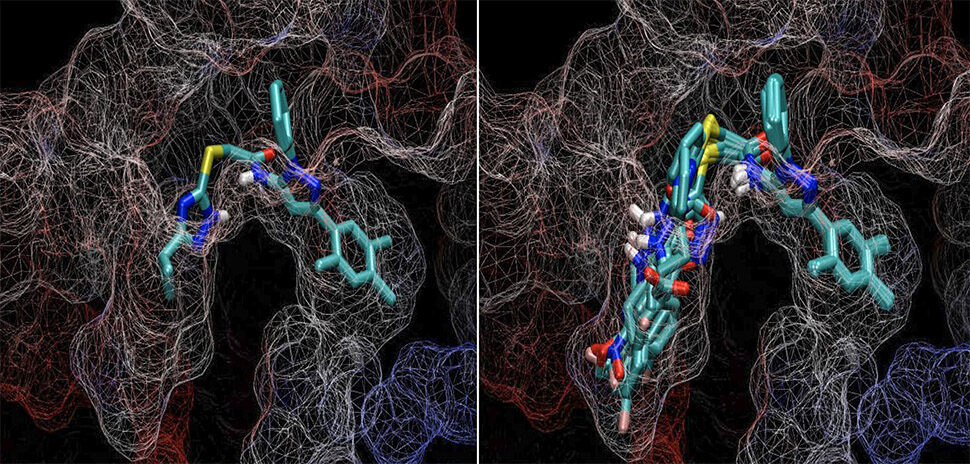The collective brain and computer power of 25,000 “Minecraft” game players could help researchers at Southern Methodist University find a new cancer-fighting drug.
Game developers and researchers at SMU are partnering with a worldwide network of gamers who play the popular game in a crowdsourcing effort to beat the disease.
The project is being led by biochemistry professors Pia Vogel and John Wise of the SMU Department of Biological Sciences, and Corey Clark, deputy director of research at SMU Guildhall, the university’s graduate video game development program.
“Crowdsourcing as well as computational power may help us narrow down our search and give us better chances at selecting a drug that will be successful.”
Pia Vogel
“Crowdsourcing as well as computational power may help us narrow down our search and give us better chances at selecting a drug that will be successful,” Vogel said in a release. “And gamers can take pride in knowing they’ve helped find answers to an important medical problem.”
Vogel and Wise have been utilizing the university’s ManeFrame supercomputer, one of the most powerful academic supercomputers in the country, to sort through millions of compounds that potentially could work in the fight against cancer.
Now, they’re going to try crowdsourced computing.
The researchers believe that the network of gamers will be able to crunch massive amounts of data during routine game play by pooling two weapons — human intuition and the massive computing power of the networked gaming machine processors.
ADDING GAMERS COULD DOUBLE PROCESSING POWER
That should more than double the amount of processing power aimed at their research problem.
“Integrating with the ‘Minecraft’ community should allow us to double the computing power of [SMU’s] supercomputer.”
Corey Clark
“If we take a small percentage of the computing power from 25,000 gamers playing our mod we can match ManeFrame’s 120 teraflops of processing power,” said Clark, who is also an adjunct research associate professor in the Department of Biological Sciences.
“Integrating with the ‘Minecraft’ community should allow us to double the computing power of [SMU’s] supercomputer.”
The research labs of Vogel and Wise are part of the Center for Drug Discovery, Design, and Delivery in SMU’s Dedman College, whose mission is a multidisciplinary focus for scientific research that targets medically important problems in human health, the release said.
According to SMU, the research is partly funded by the National Institutes of Health.
The researchers narrowed a group of compounds that show potential for alleviating the issue of chemotherapy failure after repeated use.
USING GAMERS IN RESEARCH HAS HAPPENED BEFORE
Using human gamers to enhance data-driven research has been done before with success and is a growing practice.
Vogel cited the video game “Foldit.”
Researchers had worked on a problem for 15 years without finding a solution, she said. But once the game was created, 57,000 players found a solution in three weeks.
“Foldit” is an online crowdsourcing video game about protein folding, according to the project’s website, and was part of an experimental research project developed by the University of Washington Center for Game Science, in collaboration with the university’s Department of Biochemistry.
For the SMU project, gamers will access data using their purchased version of “Minecraft,” and then will install a “mod” or “plugin” that incorporates SMU’s research problem within “Minecraft’s” terms of service.
“Gamers will be saying ‘Mom don’t tell me to go to bed, I’m doing scientific research.’”
John Wise
Minecraft was released to the public in 2011. Besides PC and Mac computers, the game can be played on gaming systems such as PlayStation and Xbox.
Players will know that they are involved in the research that will eventually include leaderboards showing where players rank toward analyzing data included in the research project.
“It also raises awareness of the research,” Wise said. “Gamers will be saying ‘Mom don’t tell me to go to bed, I’m doing scientific research.’”

































































